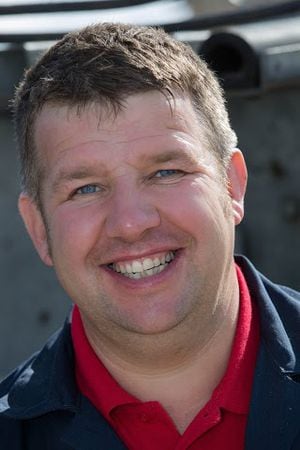Happy feet make for happy cattle
It’s no secret that cattle that have their hooves trimmed regularly are happier and more comfortable to stand longer.

Foot trimming and mobility scoring keep your cows mobile, healthy and productive.
Reducing risk and costs through a planned, preventative approach will reduce problems in the herd and minimise economic loss. I always take the view that the cost of prevention is far better than the cost of treatment.
Issues with posture and mobility will occur if hooves are not trimmed, eventually leading to an impact on profitability.
The hoof wall should always take the pressure, not the central sole. Trimming should be done at routine intervals, weekly, fortnightly and even monthly, with ad hoc or more frequent visits tailored to individual farm requirements.
Foot trimming is essential precautionary work to prevent lameness and is the most cost effective way to combat foot problems.
As innovation in farming increases even I have embraced new technology! Observing cattle and recording data digitally, a comprehensive analysis of lameness can be gathered for a herd.
Using an online manager I am able to view hoof reports anywhere at any time, receiving updated herd data in real-time, to respond immediately to any concerns and to share important welfare information with customers.
This really enhances efficiency with the preventative approach, accurately reducing problems in the herd and minimising economic loss.
As we head into autumn and begin to think about winter housing, with cattle standing on their feet in collecting yards for longer periods of time, it is even more crucial to have a vigilant eye on cattle lameness.
Combining regular foot trims with an effective foot bathing programme will gain the best results.
Footbaths are most commonly used to prevent and control the spread of Digital Dermatitis. The location of the footbath is key to its effectiveness. Ideally place them directly outside the milking parlour – with enough space to avoid a build-up of cows.
Foot baths should be placed in a well-lit area and alley ways should be kept clean. Foot baths should be at least two cow strides long, as every hoof should ideally enter the solution at least once.
The solution should be kept to a depth of around 12cm and every cow should go through the foot bathing process on a frequent basis – and more often if the severity of lameness is increasing.
If you have a beef or dairy herd it is essential to develop foot care programmes which fit in with your business operation and assist with the productivity, longevity and performance of the herd.
Adopting the new technology facilitates the opportunity for real time data; so developing accurate foot care programmes, tailored specifically to your herd helps to ensure mobility, efficiency and ultimately a healthy and profitable enterprise.
Nick Challenor is the owner of ND Challenor Professional Livestock Services which provides foot trimming, freeze branding and clipping services to farmers.
